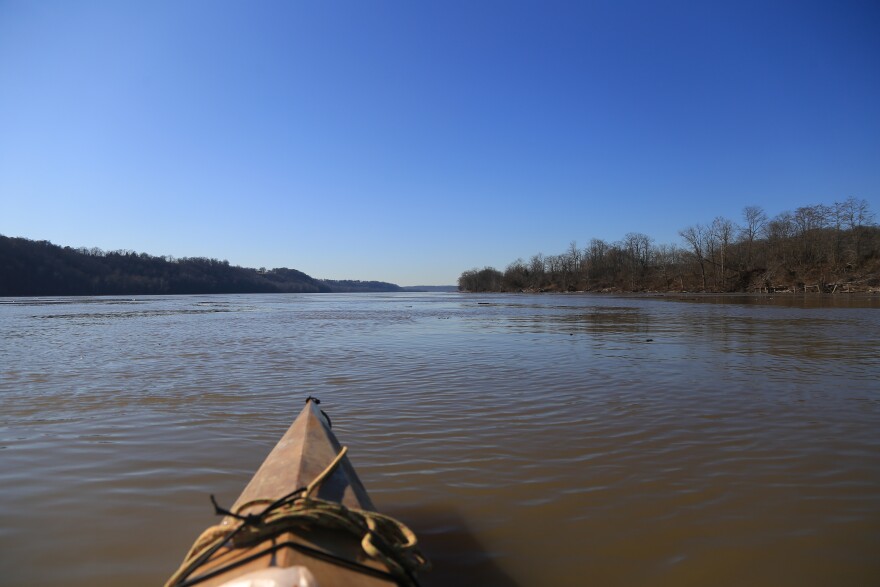From its sometimes turbid currents, the Ohio River and the basin encompassing it provide drinking water, electricity, commerce, habitat and recreation for tens of millions of people encompassing parts of 15 states.
Though mighty, the Ohio River has its share of challenges. Urban runoff, abandoned mine drainage, coal-ash contamination and emerging industrial contaminants like PFAS pollute the its water, threatening wildlife habitat and drinking water for millions. Invasive species like the Asian carp and zebra mussels threaten not just ecosystems, but economies.
All of this, made worse by a changing climate that is expected to warm the Ohio River Basin by a half-degree Fahrenheit per decade until 2040, when it begins to warm one whole degree per decade through 2099, if nothing is done, according to an Ohio River Basin Climate Change study report.
The Ohio River Basin Alliance has released a strategy to restore and safeguard the Ohio River Basin to make it clean, healthy and productive.
The goal is to unify communities along with state and federal partners to implement a regional strategy similar to what has been done to protect other great American environmental assets including Chesapeake Bay, Florida Everglades, Great Lakes and Puget Sound.
“So to be able to get the kind of attention that this large 204,000-square-mile basin deserves, we have to have a plan and we have to unify around that plan,” said Harry Stone, chairperson of the Ohio River Basin Alliance.
The Plan
The plan is the culmination of a decade’s worth of regional summits on the needs of the Ohio River Basin. But it’s really the beginning of a substantial collaboration necessary to complete the project, Stone said.
The Ohio River Basin Alliance formed in 2009 to foster collaboration and coordinate action on the river. To date the organization includes representatives from more than 120 local, state, federal, non-profit and advocacy organizations including the U.S. Army Corps Of Engineers (who manage the locks, dams and flood protection systems) and the Ohio River Valley Water Sanitation Commission (an interstate commission created in 1948 to protect water quality along the river.)
The plan outlines six goals, each of which is headed by a working group tasked with enacting it.
“The key thing at this point is to begin really bringing together broader collaborations and consensus around each of these goal areas,” Stone said.
Abundant Clean Water
The first goal is to ensure abundant, clean water in the Ohio River Basin.
To do that, the alliance wants to increase the number of rivers, lakes and streams within the basin that meet the U.S. Clean Water Act’s definition of drinkable, swimmable and fishable over the next decade. They also want to improve water source protection programs and reduce the occurrence of harmful algal blooms.
And by 2025, the plan calls for a strategy to inventory drinking and wastewater systems basin-wide, which seems like a pretty good idea considering it’s already 2020 and cities along the river, like Louisville, literally still dump sewage into the same source they pull drinking water from (don’t worry it's safe.)
Healthy and Productive Ecosystems
The basin’s ecosystems face a number of threats, both natural and manmade, from invasive species to PFAS contamination. In the next two years, the plan calls for the region-wide identification and protection of at-risk ecosystems such as wetlands, riparian zones and habitat for threatened and endangered species.
The important thing, Stone said, is to get a firm grip on the ecological needs of the basin, focus on those, and protect the productivity of the region’s ecosystems for decades to come.
Transportation and Commerce Corridor/Flood Protection
More than 200 million tons of grain, steel, chemicals, petroleum and construction materials traverse the Ohio River annually, according to the report.
“It is under-appreciated just what that does for us. For every 15 barges towed, you take 1,000 semi-truck loads of stuff off the interstate and you transport it more efficiently,” Stone said.
Unfortunately, many of the navigation dams built on the Ohio River to foster commerce are beyond their design life. Over the next five years, the alliance wants to ensure that basin waterways infrastructure is efficiently funded to protect river transportation.
The Basin’s flood protection systems don’t fare any better.
Almost 200 of the basin’s reservoirs and local flood protection projects are about 80 years old, according to the report. Considering the increased stress these projects will endure because of climate change, the plan calls for basin-wide investment in high-flood risk areas.
Knowledge and Recreation
The plan's remaining goals focus on encouraging research and recreation along the river in an effort to gain greater appreciation and understanding of the Ohio River.
On the recreation front, the plan is to grow the region’s recreation economy at a rate that outpaces the national average. Already, the six-state region of Indiana, Kentucky, Ohio, Tennessee and West Virginia net around 91,000 direct jobs and $660 million annually from the region’s recreation industry.
Kentucky educator and environmentalist David Wicks will serve as the chair of the recreation-based working group. Wicks is currently working with the National Park Service to develop a 274-mile water trail along the Ohio River from Portsmouth, Ohio, to West Point, Kentucky.






